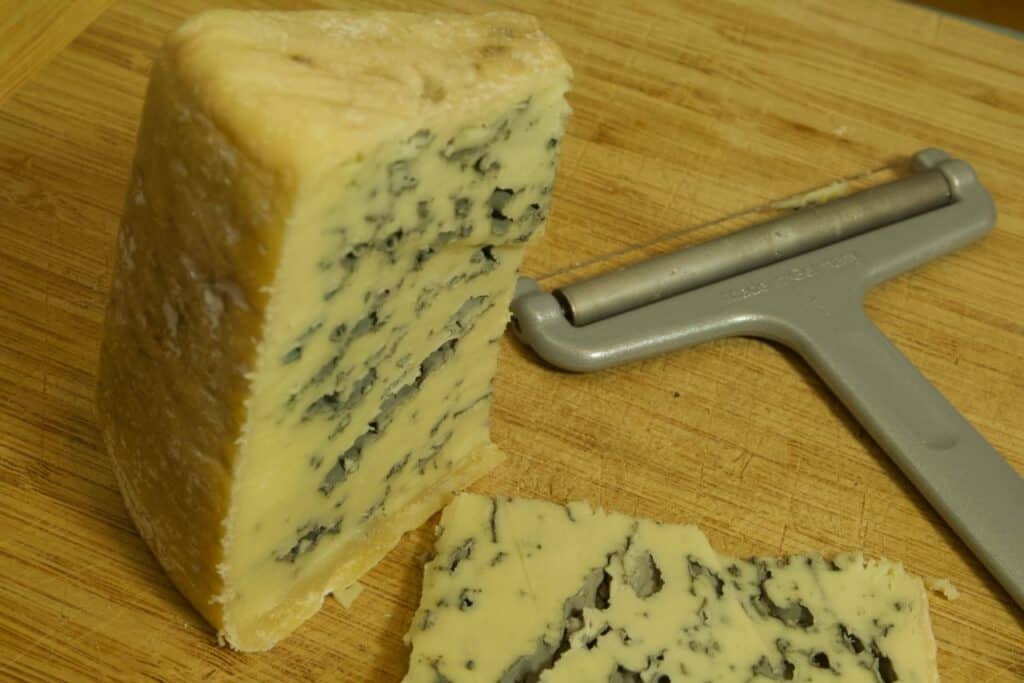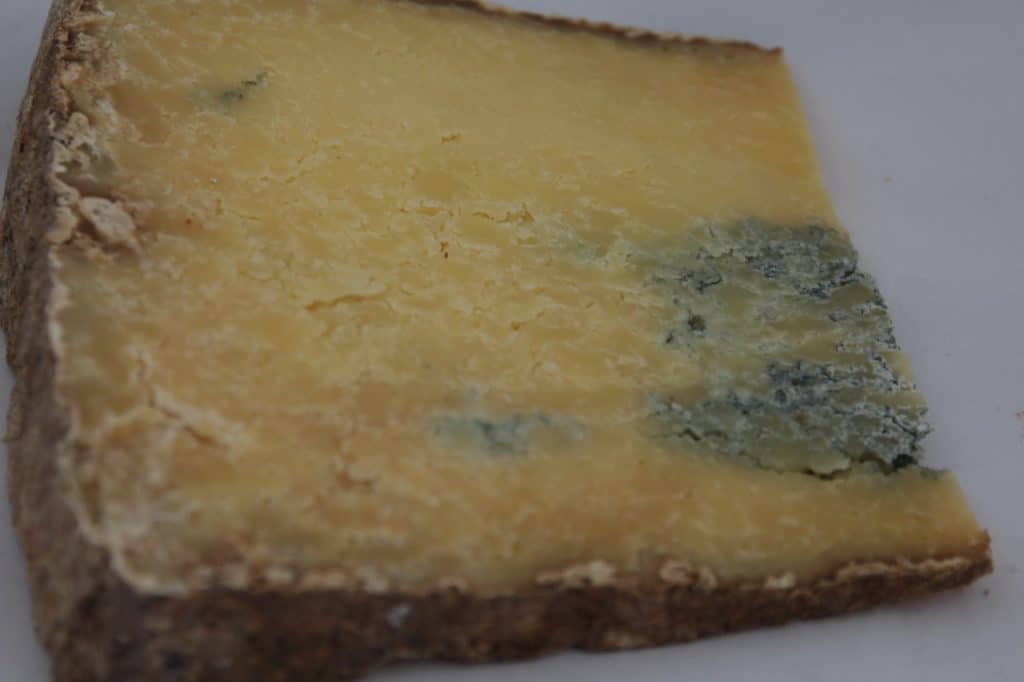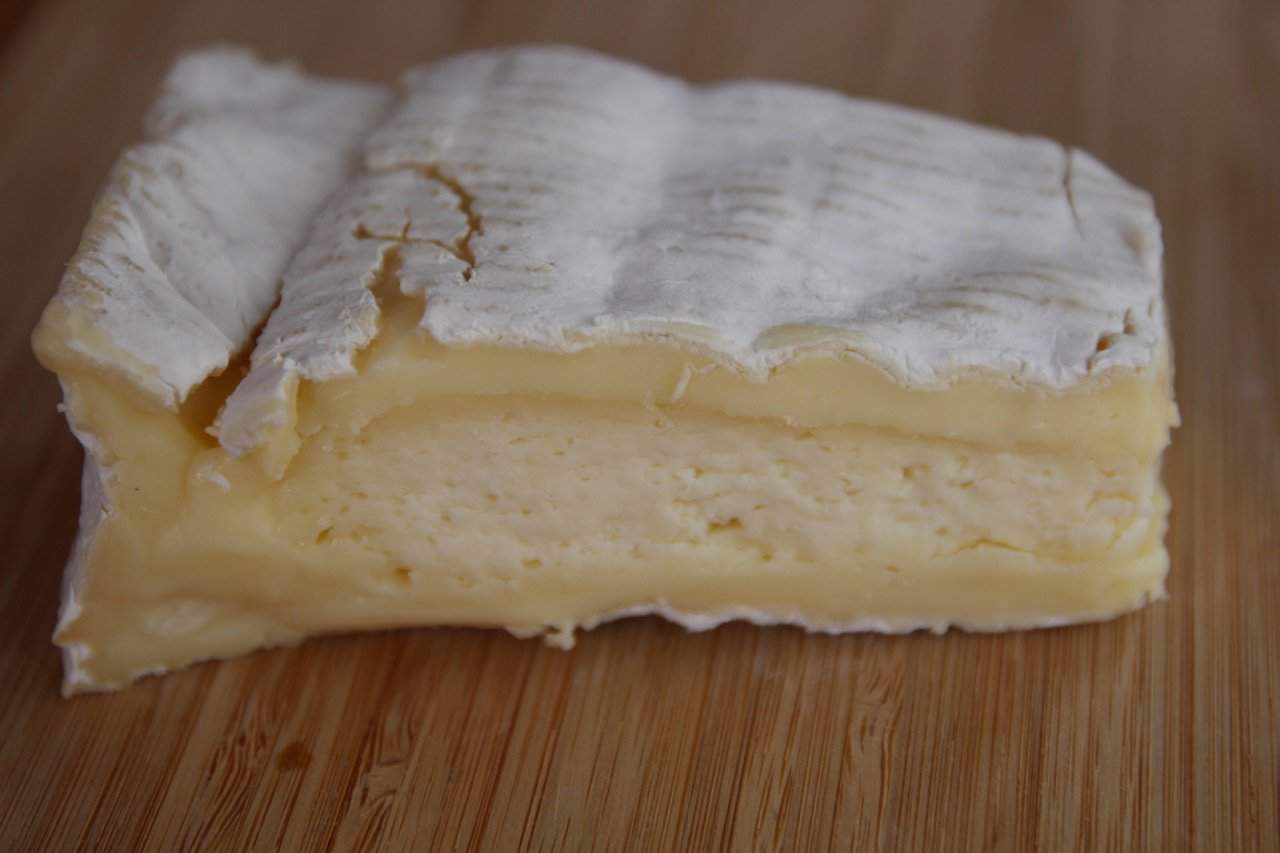Bleu d’Auvergne – what’s so special about it?

Bleu d’Auvergne, my go to week-end breakfast blue cheese. With my home made breakfast rolls, farm butter and pour over drip made coffee. I purchase my cheese from a cheese monger, so I am sure it is made from raw milk, or “lait cru” as the French will say. There is a lot of Bleu d’Auvergne made from heat treated milk, thermised or pasteurised that is. The latter being industrial varieties. There are eight farmhouse cheese makers though, so look for them. Some say this is a cows’ milk copy of Roquefort. I don’t agree thinking Bleu de Causses as a better candidate for that title.
Invented by Antoine Roussel?
As we know it today, Bleu d’Auvergne is not an old cheese. Some say it was invented around 1854 by an Antoine Roussel, but that is not all true. The cheese had been there for years, the various farmers around the area making their own variant, and none of the particularly consistent. So the blue mould was in a way living their own life. Having worked at a pharmacy as a youngster he was used to observing processes and the art of preciseness. That’s what he brought home to his family’s farm. He started to experiment how to tame the blue mould that so far had behaved rather randomly in the cheese interior. That again led to a lack of consistency in the cheese. He started out with the mould and observed how it developed on rye bread. Well he could have looked to Roquefort as they had probably done that for a long time already. Sometimes, we have to find out for ourselves, though. That did not help help with the distribution of moulds inside the cheese, which really was the problem.
Bleu d’Auvergne the first pierced cheese?
What the young Antione Roussel found out was that piercing the cheese with a needle made the blue mould grow along that canal, so he created an instrument with many needles and thus creating a cheese interior that was rather well organised. So as far as I know he was the one who introduced the piercing of blue cheeses that has become so common today. He shared his new won knowledge with the other cheese makers in the area, and they adopted it. As such you can say the new Bleu d’Auvergne was born.
The piercing structures the development of the blue mould, that is so, but the mould does not need these oxygen canals to develop as both the Spanish Cabrales and the French Bleu de Termignon and maybe others, are examples of. Even so, most makers of blue cheese today make use of the needles.
What’s so special about it?
Obviously the piercing thing, as the history is told they were the first to use the technique. It has become quite widespread. That’s something.
Bleu d’Auvergne wine pairing
I started out with recommending Bleu d’Auvergen for breakfast with coffee. Apart from that a sweet white wine is the obvious, although there are other sweet wines as well such as Maury and Banyuls from not far away. For a virgin paring try Rhubarb juice or a rhubarb juice blend. And as always, there is black tea. Milk, no sugar for me, but you take yours according to your own preferences.
Bleu d’Auvergne – what’s so special about it? Read Post »




